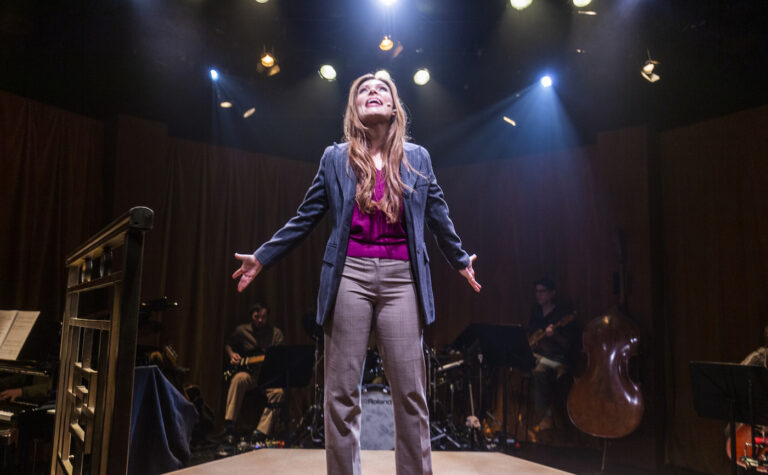
“Save our homes”: Protesters call on parliament to protect public housing
By ALLISON HORE
Residents from a number of threatened public housing communities across Sydney’s inner city came together at Martin Place today to call for their homes to be saved from the wrecking ball.
The rally followed last week’s release of the NSW Government’s Housing 2041 Strategy and called for the future of a number of Inner City public housing estates to be secured. Speaking at the rally was Emily Valentine, a resident of the Bay Street public housing site in Glebe.
“Instead of selling off public housing, the government should be building thousands of new public homes each year, providing many urgently needed jobs at the same time,” she said.
“Sydney is in the middle of a housing and homelessness crisis. But instead of addressing the causes and effects of this crisis, the government is making it worse by selling off public housing properties.”
Emily explained that the residents in her estate were told they would be able to move into the redeveloped block when it’s completed down the line, but would be shifted out into flats in Western Sydney, far from their workplaces, networks and communities, in the interim.
“People should be able to live close to where they work and stay in their community, for a community to function it must include all. The poor are being forced out so that the wealthy can gentrify suburbs,” she said.
“The NSW government supports this with its “Communities Plus” 30/70 policy.”

A new housing strategy
Under the “Communities Plus” model, public housing estates are sold off to private developers to create “mixed-occupancy” developments. In an effort to “deconcentrate disadvantage” 70 percent of dwellings in these buildings will be set aside for private properties, and 30 percent for social houses.
It is this kind of development which is set to replace a number of public housing estates in Glebe, South Everleigh and Waterloo. The NSW government said the renewed estates, high rise complexes, will mean a greater number of social housing dwellings will exist.
But critics are quick to point out the number of bedrooms will be much lower, with family homes being replaced with one or two bedroom apartments.
The latest step in the NSW government’s plans to meet the housing shortage in the state is the release of the Housing 2041 Strategy.
The first-of-its-kind document outlines the government’s 20-year vision for “better housing” across the state and includes key initiatives such as establishing a cross-sector housing advisory panel and strengthening relationships with local governments.
The strategy also calls for “better use of government-owned land” and the investigation of ways to develop new types of housing and tenure, and new delivery models. Minister for Water, Property and Housing Melinda Pavey says these initiatives will help the government to deliver improved outcomes both in the long and short terms.
“We are developing a TSA discussion paper that will call on local governments, NGOs and the private sector to come to us with ideas to deliver additional TSA projects and to meet the Premier’s Priority of reducing homelessness by 50 percent,” she explained.

But Shelter NSW doesn’t think the strategy goes far enough to protect current public housing residents from the stress of impending redevelopment.
“While big on theory and future plans, it is silent on protecting established communities in existing buildings from the threat of disruption and dislocation,” they said in a statement.
Shelter NSW CEO John Engler says he welcomes the government’s decision to explore new housing models to meet the growing need, but says it should not come at the expense of existing public housing residents.
“We all agree there should be more, not less, public housing and it should be delivered in a way that protects existing residents and their communities. Both are possible and preferred,” he said.
The fate of the Sirius
Feminist and left-wing activist Judy Mundey also spoke at the rally. She, alongside her late husband Jack Mundey were instrumental in the 1970s green bans movement which saved a number of historic buildings in Miller’s Point. She worries that more public housing estates across the CBD will be lost like the Sirius Building was.
“It’s unconscionable that almost three years later, the Sirius Building and its 79 apartments remain empty, what’s worse, is the fate that befell Sirius and its residents appears to be planned for public housing in Glebe, Waterloo, Erskineville and possibly elsewhere,” she said.
Originally built in 1979 to house displaced public housing residents from Millers Point, the building was sold off to a private development firm in 2019 for $150 million. The internal structures of the building will be torn out to make way for 76 luxury flats to be sold for upwards of $1.7 million a piece.

Ms. Mundey believes the government’s attitude towards public housing has become worse since she began campaigning in the 70s. She said with rising housing costs pricing the majority of people out of the market, the urgency for new public housing now is “as great as it ever was.”
“At the time when the Sirius was built, only some 40 years ago, governments still accepted or believed that citizens deserved quality public housing,” she said.
“Public housing built by the government for the people, is no more an extravagant concept than is public education or public healthcare. A home is a basic necessity for a decent standard of living.”
Before her own estate was threatened with the wrecking ball, Emily had been a loud voice in the fight to save a number of other public estates, including the one in Millers Point. She celebrated the Martin Place rally as a way for tenants from all estates to come together with one voice.
“Everyone has a right to secure housing, we have to fight to protect all public housing,” she said.









